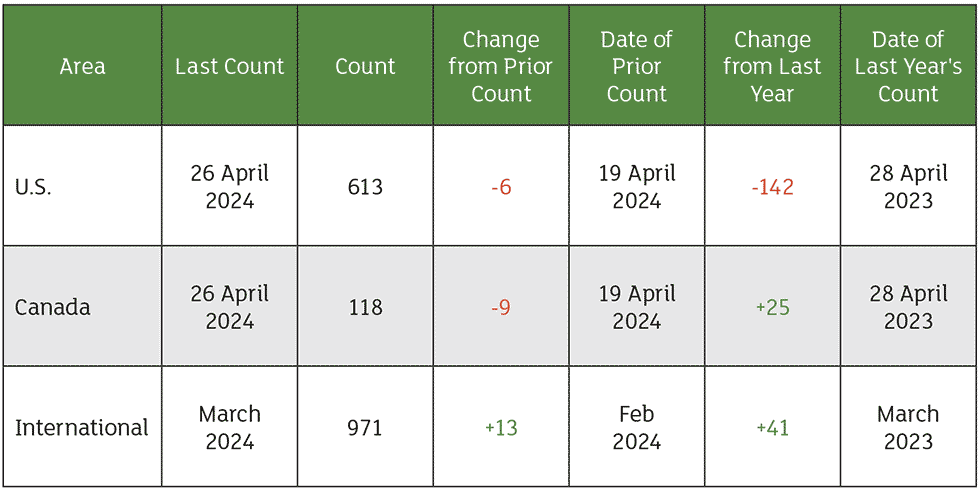
The Consumer Price Index for All Urban Consumers (CPI-U) in March remained consistent with February, showing a 0.4% increase. The all items index rose by 3.5% over the last 12 months before seasonal adjustment, surpassing the 3.2% increase seen in the preceding 12 months.
March’s uptick was predominately fueled by upticks in the shelter and gasoline indexes, contributing to more than half of the overall monthly rise in all items. The energy index saw a notable increase of 1.1%, while the food index experienced a modest 0.1% rise. Excluding food and energy, the index rose by 0.4% in March, reflecting increases in shelter, motor vehicle insurance, medical care, apparel and personal care.
In March, the United States Bureau of Labor Statistics disclosed that total nonfarm payroll employment increased by 303,000, maintaining the unemployment rate at 3.8%. Notable job growth was observed in the health care, government and construction sectors. Long-term unemployment remained stable, constituting 19.5% of all unemployed individuals.
The establishment survey data underscored significant job gains in health care, government and construction, with health
care adding 72,000 jobs, government 71,000 jobs and construction 39,000 jobs. Average hourly earnings for all employees on private nonfarm payrolls increased by 0.3% to $34.69, marking a 4.1% rise over the past 12 months.

U.S. import prices saw a 0.4% increase in March, following a 0.3% rise in the previous month, as reported by the U.S. Bureau of Labor Statistics. This rise was driven by higher prices for both fuel and nonfuel imports. Conversely, U.S. export prices rose by 0.3% in March, after a 0.7% increase in February.
For imports, prices climbed for the third consecutive month, growing by 1.4% in the first quarter of 2024, marking the largest quarterly rise since May 2022. Import fuel prices notably rose by 4.7% in March, primarily due to increased petroleum prices, while import natural gas prices declined significantly. Nonfuel import prices saw a slight increase of 0.1%, driven by higher prices for foods, feeds and beverages, as well as nonfuel industrial supplies and materials.
Overall, U.S. import prices experienced the first 12-month increase since January 2023, with fuel prices rising by 4.8%
and nonfuel import prices remaining unchanged for the year ending in March.
According to a Wells Fargo economic report, the Q1 Employment Cost Index (ECI) reading indicates a potential halt in inflation progress. The 1.2% quarter-over-quarter increase exceeded expectations, mirroring a similarly high reading from a year ago, maintaining the year-over-year gain at 4.2%. Private sector employment costs notably rose, unaffected by typically volatile factors. While not alarming for the Federal Open Market Committee (FOMC), it suggests a pause in the inflation slowdown observed last year. The FOMC is likely to maintain the federal funds rate in upcoming meetings, awaiting further data to discern if the Q1 uptick is temporary or indicative of broader trends.
References
- bls.gov/news.release/cpi.nr0.htm
- bls.gov/news.release/eci.nr0.htm
- bls.gov/news.release/empsit.toc.htm
- bls.gov/news.release/ximpim.nr0.htm
- bls.gov/news.release/ppi.nr0.htm
- wellsfargo.bluematrix.com/links2/html/52dd231c-6739-4495-b717-c2c6211f190c
- bakerhughesrigcount.gcs-web.com/rig-count-overview

